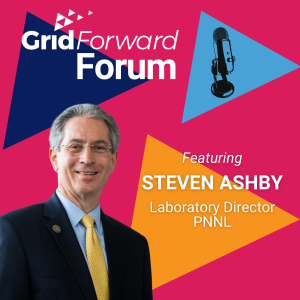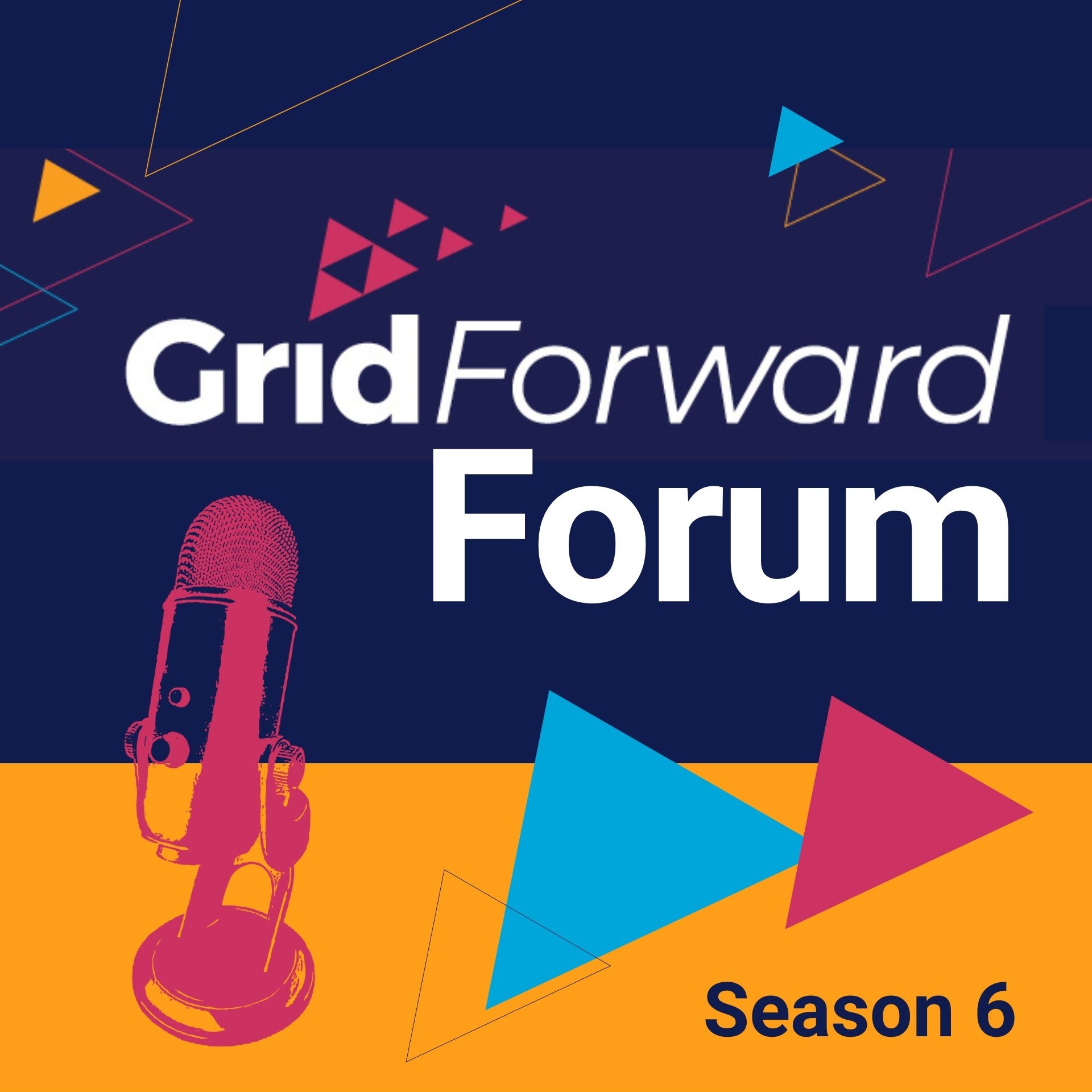Episodes

3 days ago
3 days ago
-
Applying AI-driven technologies to run the grid more effectively
-
Mitigating wildfire risks by integrating digital and advanced monitoring solutions
-
Ongoing effects of the federal agencies’ changing priorities on grid modernization
-
The importance of scaling new technologies quickly and broadly across the grid to help curb rate increases
-
Optimizing the Demand Stack to enable more grid flexibility

Wednesday Nov 05, 2025
AI Impacts for a Resilient Grid with Duke Energy, NextEra and PG&E
Wednesday Nov 05, 2025
Wednesday Nov 05, 2025
On the first day of the GridFWD 2025 event, leadership from some of the nation’s largest and most AI-engaged utilities joined a panel to tell our audience about their acceleration of AI use cases. Jason Glickman (EVP Engineering, Planning and Strategy, PG&E), Bonnie Titone (Senior VP and Chief Administrative Officer, Duke Energy) and Peter Skantze (Senior VP of Infrastructure Development, NextEra Energy Resources) discuss how utilities and infrastructure developers can leverage AI for their own use and accommodate the added demand from large load customers, while ensuring that their systems remain resilient.

Monday Oct 06, 2025
Utilizing Dynamic Line Rating to Increase Reliability and Reduce Costs
Monday Oct 06, 2025
Monday Oct 06, 2025
Dynamic line rating (DLR) is a Grid Enhancing Technology (GET) that measures the impact of ambient conditions on the carrying capacity of a grid. When DLR is employed network wide, it improves asset utilization, reliability, resilience, and confidence in investments. Guest host Julia Selker of Grid Strategies and Vishal Kapadia, CEO of LineVision, discuss how the successful implementation of DLR can save millions of dollars, identify grid weaknesses, and help meet the need for increased capacity.

Thursday Sep 04, 2025
Weighing Solutions to Increase Flexibility on the Grid
Thursday Sep 04, 2025
Thursday Sep 04, 2025
Increasing flexibility on the electric grid is necessary as demand and capacity requirements rapidly rise. Diversifying generation portfolios with emerging technologies is a good start, and significant T&D investments in innovations like virtual power plants can help match supply with demand. Cost, construction, and timing are often challenges to increasing flexibility; therefore, what solutions are going to make the most impact to help meet energy needs? Joining us to discuss these important topics about flexibility are Dr. William (Bill) Burke, CEO at Virtual Peaker, Jessica Matlock, CEO at PNGC Power, and Darren Murtaugh, Director of Electric Distribution Strategy at ICF.

Monday Aug 25, 2025
Analyzing Data Center Flexibility to Meet Growing Power Demands
Monday Aug 25, 2025
Monday Aug 25, 2025
Power demand from data centers is clearly increasing faster than current electric infrastructure and markets can accommodate. Therefore, data centers and grid operators are exploring one workaround: flexing data center loads during peak demand times. Brian Janous, of Cloverleaf Infrastructure, and Chris Pennington, of Iron Mountain Data Centers, discuss the current opportunities and challenges to data center flexibility. For example, there are options for moving workloads among facilities and leveraging the improving capabilities of battery storage. On the other hand, demand response is not a major business driver. The industry needs to define relatively simple solutions that can be deployed at scale to meet market demand.

Friday Aug 01, 2025
Powering Texas: Grid Growth, Resilience & Innovation
Friday Aug 01, 2025
Friday Aug 01, 2025
In this episode of Grid Forward Forum, host Bryce Yonker speaks with Rudy Garza (CPS Energy) and David Naylor (Rayburn Electric Cooperative) about the urgent challenges and innovations in the Texas energy sector. They explore topics like grid modernization, the impact of Winter Storm Uri, growing demand from data centers, and how Texas utilities are going to have to invest billions to keep up while working to maintain affordability and reliability.
Please join us in helping provide disaster relief for the communities impacted by recent flooding in Kerr County by contributing to the Salvation Army Kerrville and the Kerr County Flood Relief Fund.

Friday Jul 11, 2025
Friday Jul 11, 2025
State energy offices have a delicate balancing act in leading policy, tracking market signals, and encouraging economic development. All that is harder now that load growth is accelerating. David Terry, the president of National Association of State Energy Officials (NASEO) , discusses trends within state energy offices to help get energy onto the grid quickly to grow the economy while meeting community concerns. David and Bryce discuss how new approaches such as grid enhancing technologies, automated load management and long-duration energy storage provide new pathways. Listen in to this insider perspective on how the state energy offices are learning more, planning better and adjusting to new federal energy priorities.

Friday Jun 27, 2025
Supply Chain Constraints on the Grid - And What Needs to Improve
Friday Jun 27, 2025
Friday Jun 27, 2025
Since 2020, supply chain shortages have delayed the progress of necessary grid infrastructure improvements. Consolidation in the industry means fewer vendors are available which drives up prices, extends lead times and limits capacity, especially as worldwide demand increases. Will Perrich and Stephen White of POWER Engineers provide an insider's view to current constraints on the market and what needs to be done to alleviate them. Their answers cover the gamut from standardization of key components (regionally or nationally) to changing how utilities retain inventory and plan projects. The discussion ends with a rapid fire round of rating how difficult it is to procure different grid components.

Wednesday Jun 18, 2025
Scientific Discovery and Commercial Acceleration of Advanced Grid Solutions at PNNL
Wednesday Jun 18, 2025
Wednesday Jun 18, 2025
Pacific Northwest National Laboratory (PNNL) draws on signature fundamental capabilities to advance scientific discovery, improve energy resiliency, and enhance national security. On this podcast episode, Laboratory Director Steven Ashby, Ph.D., discusses key drivers and challenges that are steering the lab’s important work regarding grid resiliency and affordability. Ashby also tells our listeners about the new Grid Storage Launchpad, a one-of-a-kind Department of Energy facility to develop and test novel battery concepts at scale in a safe environment. Of course, with all these emerging technologies, there are inherent risks—wildfires, and cyberattacks to name a few. Ashby discusses these risks and the ways PNNL is working together with the industry (including by leveraging novel AI capabilities) to quantify and combat problems that can be addressed by advancing the grid.

Monday May 19, 2025
Monday May 19, 2025
Energy infrastructure received a grade of D+ in the 2025 Report for America’s Infrastructure, published by American Society of Civil Engineers. Bryce Yonker discusses why the energy sector received a low rating with Michael Miller, vice president of technical services at Exo and a member of ASCE. Miller says the four main factors that contributed to the grade include higher load growth, systems operating closer to limits, challenges to distribution grids, and the public’s lower tolerance for power outages. Miller discusses best practices for asset inspections, the need to have a national standards, and how state legislatures can have a positive impact on hardening America’s energy infrastructure.

